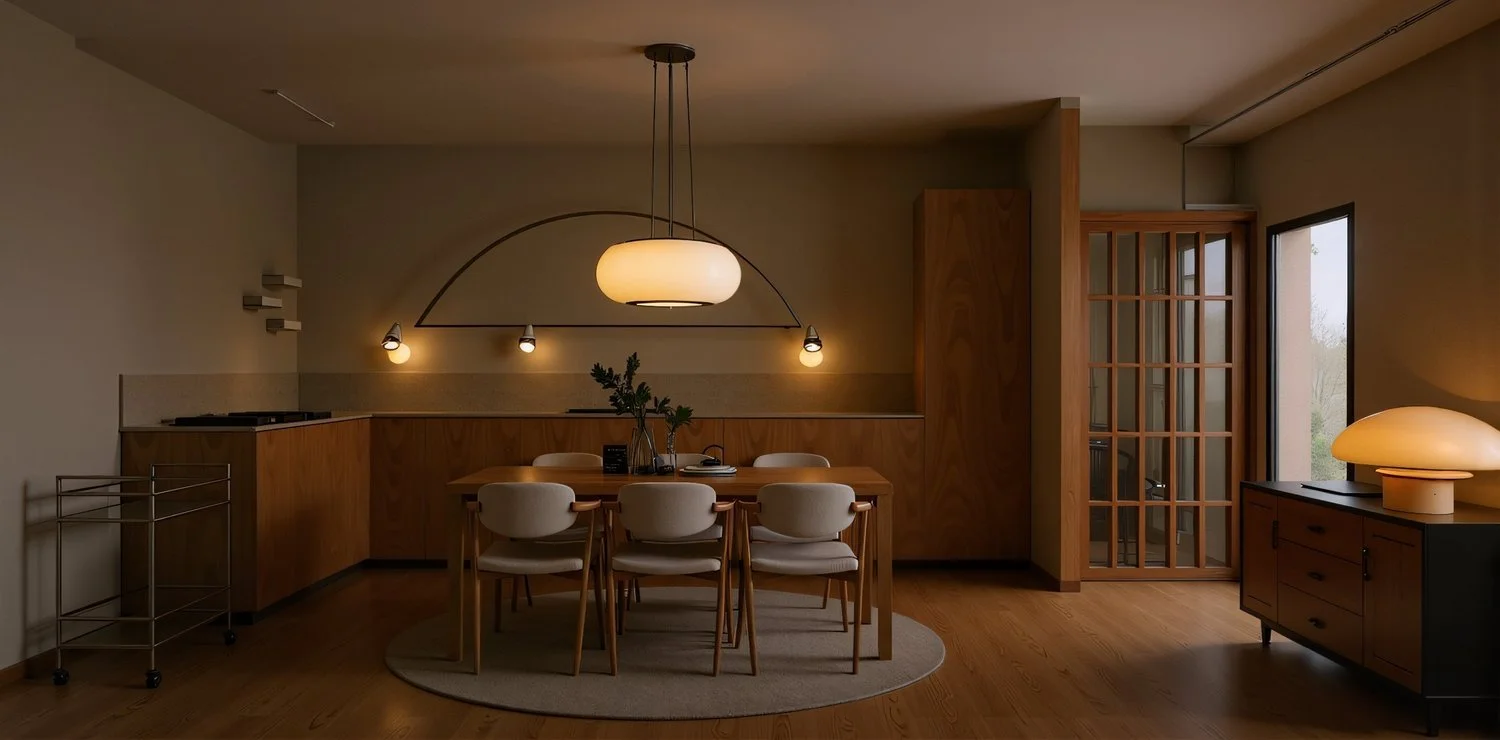What the heck is Neuroarchitecture, and what can we learn from it?
We at Nuvem have been bombarded by posts and articles mentioning Neuroarchitecture. We cannot lie, the two already intimidating words combined struck fear into our hearts. We’re just a simple interior design studio afterall. But, we decided to dive in and understand this area of study; oh boy aren't we glad we did! Learning about neuroarchitecture helped us understand why we love to be in certain spaces, and how we can design rooms to help the brain perform better! We know this sounds like si-fi, But sceptic beware, the receipts are below!
So what the heck Neuroarchitecture?
Neuroarchitecture starts from the idea that the spaces around us quietly shape how our brains work at the deepest level; often without us even realising it. With its 100 billion neurons, the brain creates our experiences and sense of self, and the environments we live and work in provide the stage on which those neurons grow, adapt, and connect.
“Mental Worlds Shaped by Neuroarchitecture: The Effects of Indoor Materials on Brain Activity and Emotional Well-Being — The Study
A fascinating new study, “Mental Worlds Shaped by Neuroarchitecture: The Effects of Indoor Materials on Brain Activity and Emotional Well-Being” (Ceylan & Erkan, 2025, ICCAUA Proceedings Journal) explores exactly that. Conducted at Süleyman Demirel University in Turkey, this research measured how different interior materials, natural wood, processed wood, concrete, and metal, influence our brain activity, emotions, and cognitive performance. As designers this is a complete eureka moment for us, as this is something we intuitively knew, but didn't possess the words (or research) to back it up.
What did the study find?
Using EEG (brainwave monitoring), cognitive tests, and mood questionnaires with 35 participants, the researchers discovered:
Natural wood led the pack. Participants performed best on cognitive tasks (highest accuracy and quickest responses), felt calmer, and showed brainwave patterns associated with relaxation and focus.
Processed wood came close. Even varnished and smoothed wood retained much of its calming and attention-supporting qualities.
Concrete and metal lagged behind. These materials were linked to slower responses, higher stress, and more negative emotional scores.
In other words, the textures and materials around us do more than set the mood — they directly shape our mental performance and emotional well-being.
Why This Matters for Interior Design
For our design studio, this research is edifying and will transform how we approach all new projects and it has even made us consider redesighing our workshop. As the researchers note, people now spend over 90% of their time indoors. Yet material choice is often treated as a purely aesthetic or budgetary decision. This study reinforces that materiality is also a health and performance decision. Natural and organic textures like wood align with biophilic design principles — the idea that connecting to nature indoors reduces stress and restores attention (Kaplan & Kaplan, 1989; Ulrich, 1984),
Conversely, industrial materials like concrete and metal may look modern, but their “coldness” can create emotional distance and mental fatigue (Rice et al., 2006; Pallasmaa, 2024).
Design Tips Inspired by the Research
Bring in natural wood wherever possible — wall panels, furniture, or flooring. Even subtle accents can make a difference.
Mix textures thoughtfully. Processed wood still offers benefits, so it’s a good compromise in spaces needing durability.
Balance the cold with the warm. If you’re using metal or concrete for their industrial appeal, soften the space with wood, plants, or textiles.
Think beyond looks. Ask yourself: how will this material make me feel over hours and days?
A Human-Centered Future
Ceylan and Erkan’s (2025) work highlights the exciting potential of neuroarchitecture — blending neuroscience and design to create spaces that genuinely support human thriving. As Alain de Botton wrote in The Architecture of Happiness (2006), “The spaces we live in shape our moods and behaviors.” This study adds: they shape our brains, too.
For interior designers, this is both a responsibility and an opportunity: to craft environments that not only look beautiful but help people think clearly, feel calmer, and live better.



